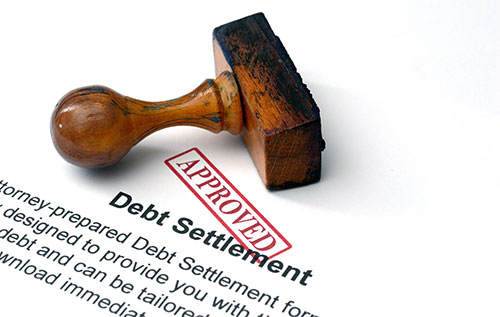Debt Settlement Reduces Your Balance – Not Just Your Interest Rate
While the Debt Settlement approach is not suitable for everyone, its flexible nature makes it applicable to a wide range of financial circumstances. For individuals and families seeking an alternative to bankruptcy, there is simply no better option to get out of debt.

Here are a few guidelines to help you determine whether or not Debt Settlement is something you should consider:
1. Do you have a legitimate financial hardship condition?
Most debt problems are caused by loss of income, medical issues, or divorce / separation. These are legitimate financial hardships that can happen to anyone through no fault of their own, and any one of these situations can wreak havoc on a household budget.
Debt Settlement system is not a “free lunch” for people who don’t feel like paying their bills. If you are over your head due to a hardship circumstance, and you’d prefer to work things out with your creditors rather than declare bankruptcy, then Debt Settlement can provide an honest and ethical debt relief alternative.
2. Are you committed to getting out from under your debt?
Debt Settlement is an aggressive approach to debt relief; and, as such, it presents an occasional challenge. Your level of commitment to staying the course, even when the road gets a little bumpy, often determines success. For those who are willing to see it through, debt settlement can get you through your financial difficulties faster and at a lower cost than any other debt relief option.
3. Are your debts primarily from credit cards?
Most types of unsecured debt can be negotiated, including lines of credit, signature loans, repossession deficiencies, financing contracts, department store cards, miscellaneous bills and more. The deepest discounts, however, are usually obtained with credit card debts; so if the majority of your debt load is comprised of credit card debt, you can anticipate good results from the Debt Settlement strategy.
4. Is your monthly budget up to the job?
With a Debt Settlement program, you must be able to build up funds for settlement at a reasonable pace. A good rule of thumb is that you should be able to set aside roughly 1.5% of your debt level on a monthly basis. So, for example, if you owe $30,000 in unsecured debt, you should be able to consistently set aside $450 per month. This would allow for a program of approximately three years’ duration.
Budgets vary from month to month, so it’s possible to set aside 1% one month, and make up for it by setting aside 2.0% the following month, so long as the average over time is around 1.5%. This makes the program ideal for people whose income varies up and down because of overtime pay, seasonal cycles, or commission-based income. But if you’re funding the program consistently below the 1.5% monthly level, the duration will stretch out to the point where you may become frustrated with the lack of progress.
5. Do you have additional resources to work with?
Additional financial resources are a bonus in New Era’s Debt Settlement programs. Small inheritances, insurance settlements, cash-value life insurance policies, even borrowing from friends and family are a few of the alternate sources of funding that New Era clients have used to take advantage of extra large debt reductions.
Such resources are not necessary for debt settlement success. They’re just nice to have.
Other Debt Relief Options
As we’ve said before, debt settlement is not the best strategy for everyone. If you don’t meet the qualifications for a debt settlement program there are other options that might work well for you. Visit our Other Debt Reduction Options section to learn more about these other strategies.
However if after reading this page you feel debt settlement could work for you, give us a call at (800) 527-4421 and let’s get started now.
